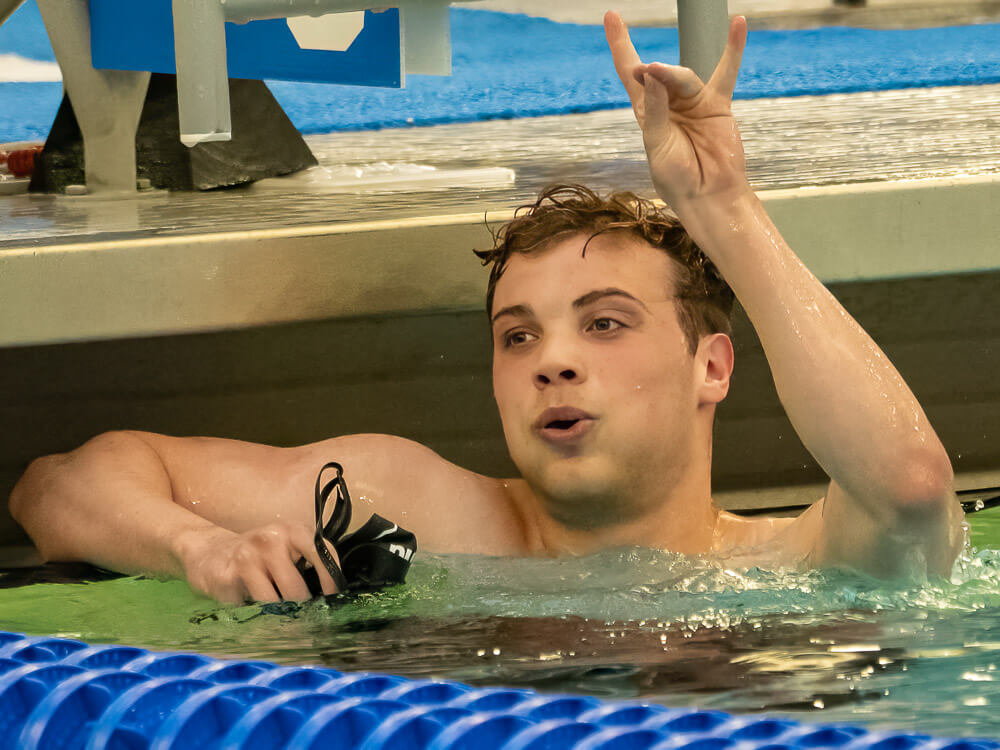Do It Yourself: Simple Steps For the ROAD to Recovery…Or R-E-C-O-V-E-RY

Do It Yourself: Simple Steps For the ROAD to Recovery…Or R-E-C-O-V-E-RY
After taking on a long swim meet or getting through a challenging practice, all a swimmer really wants to do is head straight to bed. What athletes miss most of the time is an essential part of becoming a better swimmer: Recovery. Recovery is a vital process that helps your body maintain and regain its physical demands and composition. Follow these critical steps in order to improve your recovery and overall performance.
R-Rest. The first step you need to recover is rest. This is one that most athletes know about and try to do a good job at even throughout their busy day. The average person needs 8+ hours of sleep each day, and to properly recover from the physical strain of practice, you certainly should aim to hit the number. During the sleep cycles, your body is still going through physiological changes, which help to grow and recover the muscles that have been stressed or strained. To ensure better sleep, it would be beneficial to limit electronic devices before bed, sleep in a dark cold environment, and try to go to bed at the same time each night.
E-Eat. The next step is to eat right. You must fuel your body with proper nutrition for it to work best. You directly recruit ATP, the energy source, from nutritionally valued foods, which correlate to how efficient and fast your muscle fibers perform. Certain foods may alter your brain efficiency and your mental state before practice or a race. So, you must eat right.
Although it is well-known, you must maintain a good diet to perform well. Most don’t understand how to do it efficiently. The timeframe in the schedule of your day is crucial to what you eat. Healthy snacks allow you to fill up without eating processed junk foods. A sufficient intake of water is also important.
C-Cool It Down. Having an ice bath is one of the better-known forms of recovery. It helps to reduce inflammation from sore or damaged muscle tissue. Doing a cold tub for 20 minutes after exercise may help to drastically reduce the amount of scar tissue and soreness that you may experience. Adding this to your recovery routine not only improves it but may help you recover faster. You may be able to get through doubles and weights without muscles being too fatigued.
O-Organize. The recovery process also entails a period to organize and reflect. It is a great time to organize your thoughts. Do a self-assessment of your swim meet. Establish new goals.
V-Vibration Techniques. Using devices such as a massage gun or battery powered foam roll-out can help increase blood flow to the muscle tissue, thereby aiding in the recovery process. The vibration will help to break up stagnant muscle tissue. This allows new blood to flow into your body, thus increasing recovery and stretching your muscle tissue.
E-Elevation. One of the more common techniques that is often missed is elevating your body parts to increase recovery. This method is free. You can do it anytime in any setting. Raising your feet or arms above the level of your heart helps your blood to flow into these regions. Just like in vibration, old stagnant blood is sitting in your muscles, and when altered by outside mechanisms, it allows new blood flow into your muscles. Kicking your legs up for 10 minutes is an easy method to add to your routine.
R-Relax. Taking time out of your day to do something that isn’t swim or school-related is equally as important to your recovery process. Pick a fun hobby or activity that helps you wind down. Is it reading, drawing, or going for a walk? These relaxation tips can help you to take your mind off your daily tasks. Recovering your mental state is just as important as your physical being.
Y-Yoga. A key to an any athlete’s arsenal is stretching. It is critical before vigorous exercise. Stretching not only helps you recover but can prevent unnecessary trauma to your body. Yoga is a great way to feel and move your body. It helps you stay intact with your coordination, balance, and posture. These movements are crucial because they can mimic the important shapes that swimmers perform in the water.
Let’s DIY and take control of your personal RECOVERY.




Interesting, some good tips – thanks. Maybe consider the mind’s role in recovery, otherwise, very helpful.